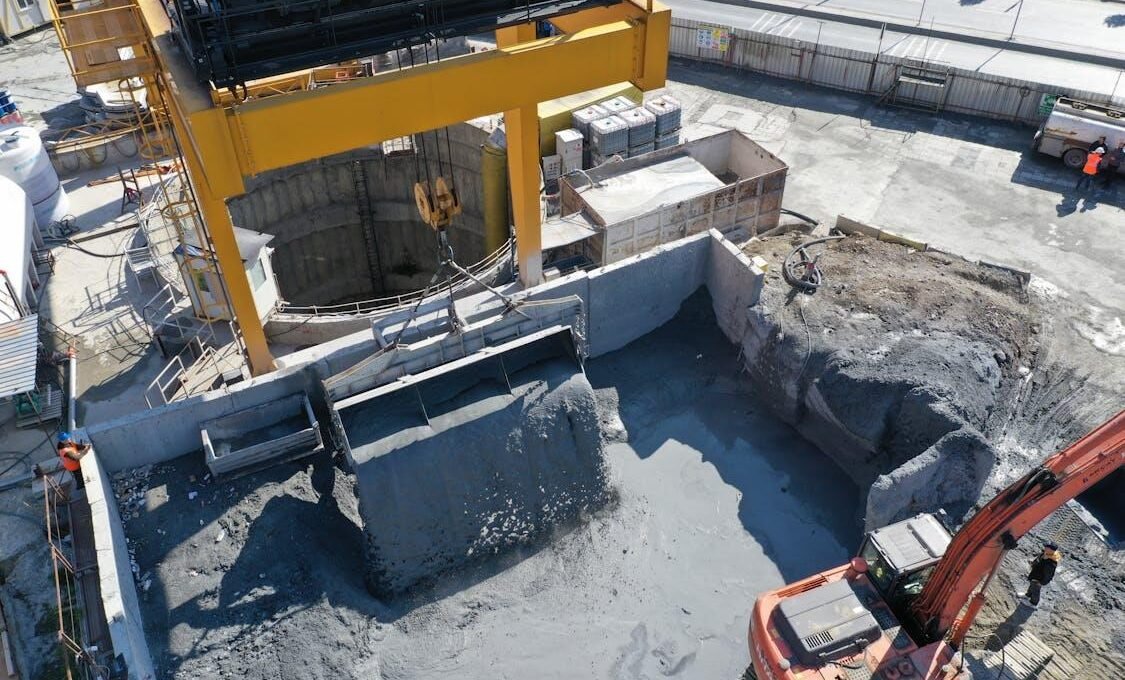On-site decision-making is changing how industries operate. Instead of waiting for instructions to travel down a long chain of command, teams now have tools that let them act immediately when something happens in the field. This ability to decide and adjust on the spot has become one of the biggest drivers of efficiency, reliability, and growth across industrial sectors.
Teams working in industrial environments are under constant pressure to keep projects moving without interruption. Seasonal changes, shifting site conditions, and equipment demands can quickly affect timelines if they are not addressed right away. Access to real-time data, mobile communication, and monitoring systems gives crews the confidence to act at the right moment.
Real-Time Data Collection
Real-time data gives field teams the information they need to make decisions quickly and accurately. Instead of waiting for reports to be compiled and sent back from another office, operators can review what is happening on-site in the moment. Having such direct visibility allows them to identify issues sooner and take corrective action before small problems disrupt work. This is particularly valuable in industries where conditions can shift suddenly and unexpected challenges are common.
In drilling operations, MWD (Measurement While Drilling) is an example of how immediate data changes outcomes. It provides information about drilling direction, angle, and geological conditions while the process is underway. Operators can use that data to adjust their approach in real time, avoiding wasted effort and keeping the work on track. Many projects rely on an MWD company to provide the technology and support needed for real-time field decisions. Without such advanced tools, teams would be forced to wait for analysis that arrives too late to influence on-site choices.
Mobile Platforms for Instant Communication
Mobile platforms have given industrial teams the ability to share updates, send instructions, and coordinate tasks instantly. Supervisors, engineers, and workers can stay aligned no matter where they are located, reducing delays that often come from miscommunication or waiting for formal updates. With everyone connected through mobile devices or apps, decisions can be made faster and with greater confidence.
Workers can send photos or videos of equipment issues, enabling experts to provide guidance on the spot. Teams can also log updates in real time so that the entire group stays informed about progress and problems.
IoT for Immediate Feedback
The introduction of IoT devices has transformed how industries track and manage equipment. Sensors built into machines provide live feedback on performance, allowing operators to see whether systems are running smoothly or showing early signs of trouble. Instead of waiting for breakdowns, teams can take immediate steps to adjust or schedule repairs based on the data being collected in real time.
Data gathered from IoT sensors can be analyzed to find patterns and predict when maintenance may be required. Field teams then use that information to make smarter choices in the moment, balancing short-term fixes with long-term reliability.
Adaptive Maintenance Strategies
Traditional maintenance often followed fixed schedules that did not always match actual equipment needs. Adaptive maintenance strategies have shifted this approach by relying on current data to guide decisions. Field operators can review diagnostic information, performance history, and sensor readings to determine whether equipment needs immediate attention or can continue to operate.
The benefits are clear: downtime is reduced, repair costs are often lower, and equipment can run more reliably. If a piece of machinery shows early signs of wear, a quick service can be scheduled before it turns into a full breakdown. On the other hand, machines that are still performing well are left in service, avoiding unnecessary interruptions. Adaptive strategies give teams practical options that align with what is actually happening in the field rather than sticking to rigid timetables.
Resource Allocation Decisions
Managing resources effectively is one of the most important parts of running industrial projects. When conditions change, the ability to reassign equipment, adjust staffing, or redirect materials immediately can make the difference between staying on schedule and falling behind. On-site decision-making gives managers and team leaders the flexibility to act in real time, matching resources to the most urgent needs.
This approach also reduces waste. Instead of waiting for approvals from remote offices, teams can shift resources where they will have the most benefit. For example, if one area of a site is experiencing delays, workers or equipment can be redirected quickly to restore balance.
Lean Practices
Lean practices focus on reducing waste, improving efficiency, and creating value in every part of the process. Real-time decision making directly supports this approach by allowing teams to react immediately when inefficiencies appear. Rather than allowing problems to build up, on-site staff can identify wasteful steps and eliminate them on the spot.
Practical examples include adjusting workflows to match actual demand, cutting down on waiting times, or reorganizing tasks to make better use of available staff. These quick, on-the-ground adjustments align perfectly with lean principles, creating a culture where improvements are made continuously instead of waiting for large-scale reviews.
Mobile Sensors
Environmental conditions have a direct impact on industrial operations, from air quality and temperature to pressure and humidity. Mobile sensors allow teams to track these factors in real time, giving them the information needed to make quick adjustments. Having immediate readings helps operators understand how current conditions may affect equipment, materials, or worker safety.
The portability of these sensors makes them even more useful in dynamic environments. Teams can move them to different parts of a site, collect specific data, and respond based on accurate readings.
Transparency Through Instant Decision Logs
Recording decisions as they happen creates a valuable layer of transparency in industrial settings. Digital platforms now allow teams to log choices in real time, providing a clear record of who acted, what was done, and why. These logs can be reviewed later for accountability, training, or process improvement.
The presence of instant logs also builds trust among teams. When decisions are documented openly, workers and managers alike can see that actions are based on accurate information and sound reasoning.
Continuous Improvement Cycles
Field workers often have the most direct knowledge of how processes function on the ground. When their input is captured in real time, it becomes a valuable tool for continuous improvement. Teams can identify recurring problems, suggest practical solutions, and help refine operations based on their daily experience.
This feedback loop creates a cycle of constant learning. Instead of waiting for periodic reviews, managers can adapt processes more frequently, guided by direct field input.
Enhanced Safety Measures
Safety is always a top priority in industrial environments, and real-time reporting strengthens protective measures. Workers can immediately record hazards, accidents, or equipment failures, which allows supervisors to take action without delay.
Technology makes this process even more effective. Mobile apps and digital forms let workers submit reports quickly, complete with photos or location data. On-site decision makers can then act immediately, whether that means stopping a task, isolating equipment, or implementing a corrective measure.
Real-time data, mobile platforms, IoT, adaptive maintenance, and other tools empower teams to act with accuracy. Each supports productivity and long-term growth by reducing delays and keeping operations aligned with current conditions.



